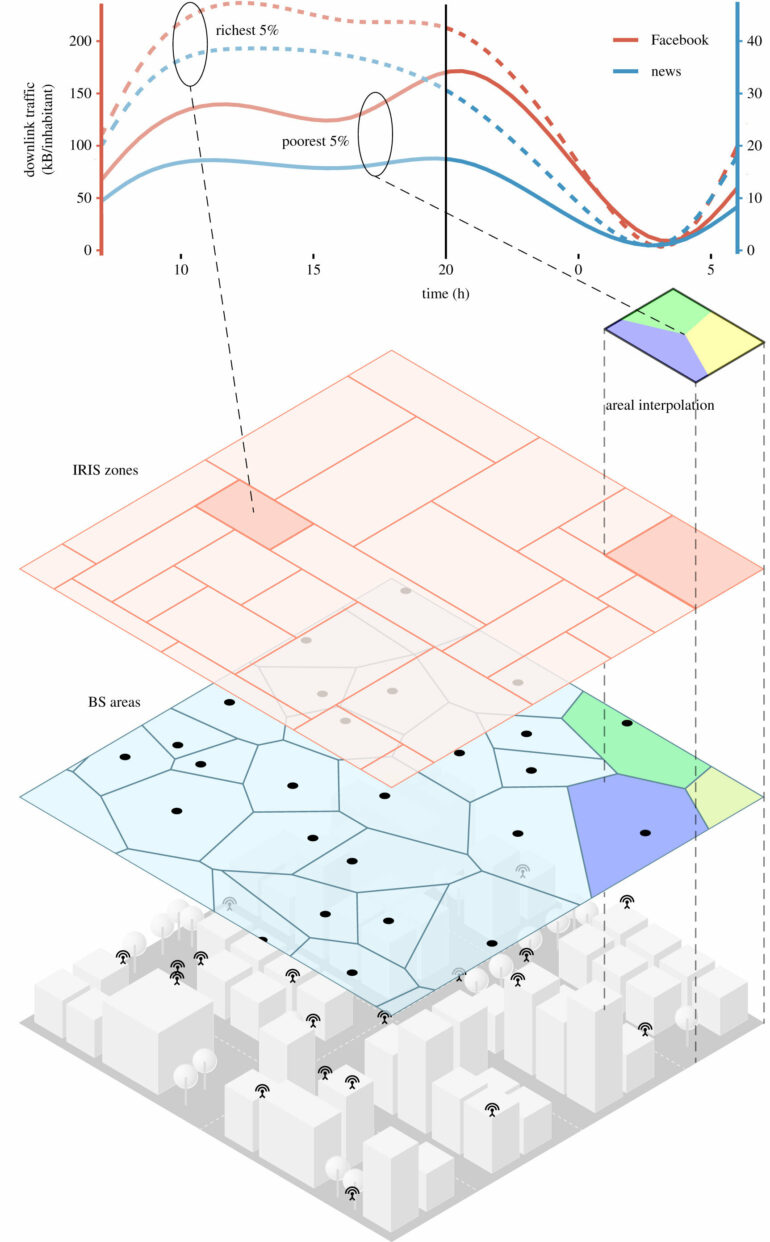Social networks are used more often in poor neighborhoods than in affluent neighborhoods, while the latter tend to consume more information from traditional online media. This is one of the conclusions of a scientific study undertaken by researchers at the Universidad Carlos III de Madrid (UC3M), the IMDEA Networks Institute, and Orange Innovation which analyzes the relationship between internet usage and variables such as education, income, or inequality in a specific area.
The digital gap in terms of accessing technology and the internet is minimal in developed countries, given that nearly everyone has a smartphone. When this initial gap is narrowed, the “usage gap,” as these researchers have named it, appears. This gap represents how different social classes use the internet differently due to their economic status.
Generally speaking, “higher levels of news consumption via traditional online media is associated with higher purchasing power and higher levels of education. On the other end of the spectrum, higher levels of Facebook consumption are associated with lower purchasing power and lower levels of education,” notes one of the study’s authors, Iñaki Úcar, researcher at the UC3M-Santander Big Data Institute.
Researchers highlight some of the possible consequences of this difference in use: “As platforms, such as YouTube, or social networks, such as Facebook, have been used to spread misinformation, and the relative use of these platforms is higher in areas where the population has lower levels of education and lower-income, the effect of this misinformation is likely to have affected these areas more,” explains Esteban Moro, from the UC3M’s Department of Mathematics.
The paper, recently published in the Journal of The Royal Society Interface uses anonymous aggregated telephone data in France to predict census variables. Researchers believe that, due to globalization, these results could apply to countries with similar cultures and of similar wealth, such as countries around Europe and North America.
The digital gap in usage that they have detected is particularly large for certain types of services, such as social media, audio and visual streaming, email, and consumption of news content. “This is a rather surprising result, especially given that the analysis has been carried out in dozens of cities in a developed European country, where it could be assumed that digital gaps would have been closed due to the omnipresent availability of access to mobile broadband,” notes another of the study’s authors, Marco Fiore, a researcher at the IMDEA Networks Institute.
In this study, scientists have demonstrated, quantitatively and on a large scale, the validity of hypotheses on the heterogeneity of mobile services usage by different socio-economic groups for the first time. “Prior to our study, these hypotheses had only been validated using qualitative studies on small groups of individuals. Demonstrating that this phenomenon is valid for hundreds of thousands of users is an important step forward,” concludes Esteban Moro.
More information:
Iñaki Ucar et al, News or social media? Socio-economic divide of mobile service consumption, Journal of The Royal Society Interface (2021). DOI: 10.1098/rsif.2021.0350
Provided by
Carlos III University of Madrid
Citation:
Researchers report a new digital gap in internet usage between rich and poor people (2022, January 20)



